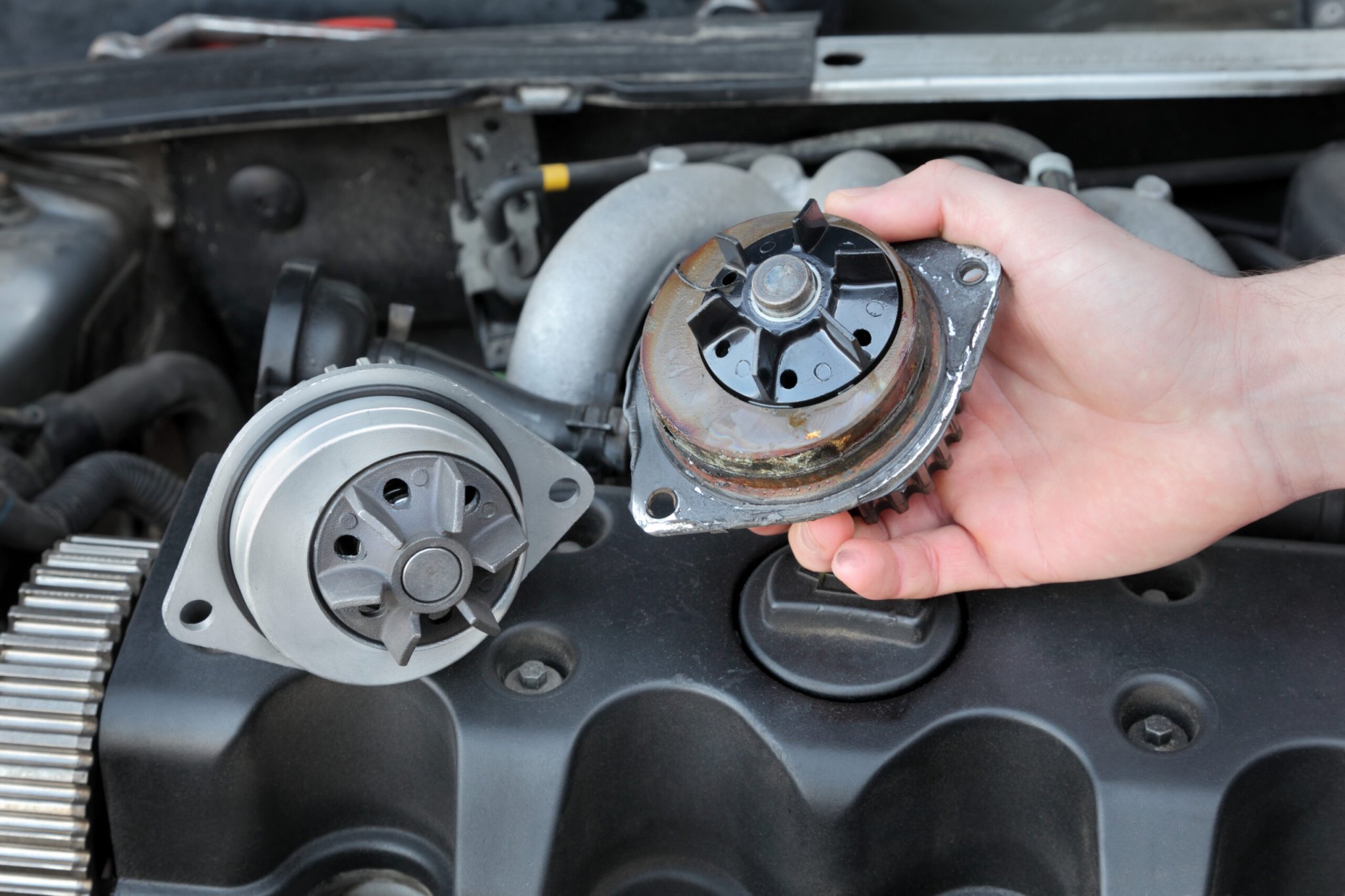

We may earn revenue from the products available on this page and participate in affiliate programs. Learn more ›
Every car has comprehensive service schedules and intervals. Usually, the water pump is part of a major service, and thus must be treated as a wear item like brake pads or engine oil.
Over time, the metal and plastic of the water pump gets brittle, worn, and deteriorates. If the proper coolant flush intervals weren’t observed, it may rot from the inside out and turn to dust, which would cause the vehicle to catastrophically overheat. Other times, it seizes and stops spinning, thereby failing to pump vital coolant through the engine. Either way, when the time comes to swap a water pump, it actually isn’t too hard to accomplish in most cases, depending on where it is. It does take a little more bravery than usual, but it is perfectly doable with the spanner-yielding garage warrior.
The Basics of Changing a Water Pump
Estimated Time Needed: 2-5 hours
Skill Level: Intermediate-advanced
Vehicle System: Cooling, engine
Safety
Doing this job can be messy more than anything. To ensure that no coolant goes anywhere that could be dangerous, make sure to have some safety glasses, gloves, towels, and make sure the car is cold when working on it.

Everything You’ll Need To Change a Water Pump
Then the tools you will need are also fairly basic. We don’t know what’s exactly in your toolbox so we’ll list what you need. Just in case.
Tool List
Parts List
- Coolant (of the correct type)
- Hose clamps
- Water pump
- Timing belt kit (if applicable)
- Timing chain kit (if applicable)
- Sealant or gasket
Organizing everything you need before starting the job will save precious time and frustration. Make sure the job can be done in one session and life will be easier. Trust me.
Here’s How To Replace a Water Pump
Most water pump swaps are done similarly, even if they’re secured to the car in slightly different ways. Let’s walk through the general steps for an independent pump, a timing belt pump, and a timing chain pump.

The Separate Water Pump
1. Open the radiator cap, locate the coolant drain underneath the car, and empty the cooling system.
2. Make sure there is clearance to access and remove the water pump. It’s very possible there will be a variety of parts you need to remove to get to the pump, including hoses, sensors, fans, intakes, or various other things. If you’re unsure what to do, read your service manual to determine exactly the route you need to take.
3. Once you gain access to the water pump, disconnect any coolant lines leading to it and let them drain.
4. Unbolt the water pump from the engine. It is usually on the front of the engine, sometimes hidden on the side of the engine.
5. Make sure the metal surface of the engine is clean before installing new water pump. A plastic scraper can help with this.
6. Determine if the new water pump uses a gasket or sealant and use the correct part.
7. Reinstall water pump to engine, then reconnect the coolant lines and hoses.
8. Refill the cooling system and bleed the cooling system. You can find more information about how to bleed the system in that link.

The Timing Belt Water Pump
1. Locate the coolant drain underneath the car and empty the cooling system.
2. Remove any timing covers and locate water pump. Support engine if necessary to prepare for timing belt job.
3. Remove the timing belt, timing belt tensioner, and pulleys.
4. Unbolt the water pump from the engine.
5. Make sure the metal surface of the engine is clean before installing new water pump.
6. Determine if the new water pump uses a gasket or sealant and use the correct part.
7. Reinstall the water pump to the engine and reconnect coolant lines and hoses.
8. Refill cooling system and bleed the cooling system.

The Timing Chain Water Pump
1. Locate the coolant drain underneath the car and empty the cooling system.
2. Remove timing cover and locate water pump. Support engine if necessary to prepare for timing chain job.
3. Remove necessary timing components like the timing chain, timing chain tensioner, and timing guides.
4. Unbolt the water pump from the engine.
5. Make sure the metal surface of the engine is clean before installing new water pump.
6. Determine if the new water pump uses a gasket or sealant and use the correct part.
7. Reinstall water pump to engine, reconnect coolant lines and hoses.
8. Refill cooling system and bleed cooling system.
Pro Tips for Changing a Water Pump
- Make sure to get a large, wide drain pan. Coolant gets everywhere and it is not good for the environment.
- Do not mix coolant types. Refill the system with what came out of it, or commit to a full flush and refill.
- It is worth investing in hose clamp pliers that lock in place. Normal pliers do the job, but specialty pliers make it easy.
- Getting new coolant hoses isn’t strictly necessary. If the hoses are intact and flexible, they should be reusable. If they are swollen and mushy, replace immediately.
Video
Some of us, including myself, learn better visually. We included a few videos to demonstrate how this process will vary depending on the vehicle.

These videos demonstrate the need to remove a fan as part of the process.


You’ve got questions. The Drive has answers.
FAQs About Changing a Water Pump
A. No, you cannot. The system must be opened to do the job.
A. Not usually. Sometimes they will be mounted in inconvenient locations but will very rarely use a special tool. Basic hand tools will do the job.
A. It’s not strictly necessary but it’s good practice. On some cars, the thermostat is integrated into the water pump.